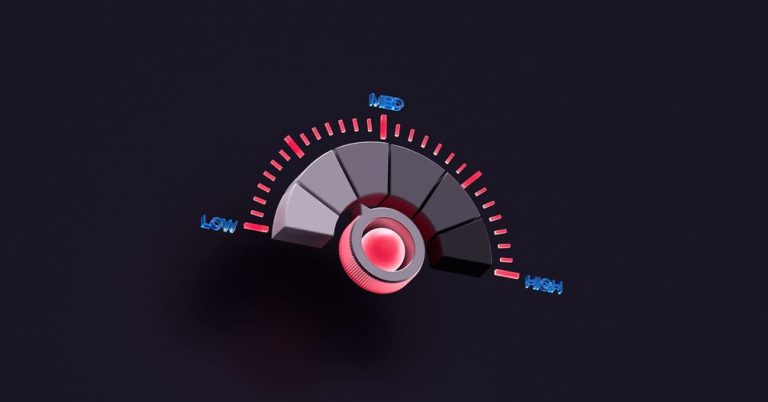
¿Qué es el apalancamiento en el trading?
Contenidos
Cuando los operadores utilizan dinero prestado para obtener una posición en el mercado mayor de la que les permite su propio capital, esto se denomina apalancamiento. Es como usar una herramienta para levantar algo: un pequeño esfuerzo puede generar mayores resultados. Este enfoque puede ser rentable cuando los precios del mercado suben, pero también conlleva riesgos. Este artículo detalla lo complejo que puede ser el apalancamiento en la inversión y ofrece consejos sobre cómo utilizarlo manteniendo los riesgos bajo control.
Entonces, el apalancamiento en el trading consiste básicamente en usar dinero prestado para operar a mayor escala. Piénsalo como una escalera; te permite alcanzar posiciones más altas.
En términos simples:
- El apalancamiento le permite operar con más dinero del que posee actualmente.
- Es como usar una tarjeta de crédito. Si tienes $1,000 y usas un apalancamiento de 10:1, puedes operar como si tuvieras $10,000.
- Si tu operación es exitosa, ¡tus ganancias serán mayores! Pero si pierdes, ten en cuenta que tus pérdidas también crecerán con la misma rapidez.
Si se usa correctamente, el apalancamiento puede ser muy útil. Pero es necesario tener control, planificación y saber gestionar el riesgo.
¿Qué es el apalancamiento?
Cuando hablamos de apalancamiento en el trading, básicamente estamos hablando de la práctica de mantener una posición comercial mayor a la que sería posible con el propio dinero del trader mediante el uso de dinero prestado.
El uso del apalancamiento ha evolucionado con el tiempo. Anteriormente, solo las personas con capital y sólidas conexiones con bancos o prestamistas podían acceder al apalancamiento. Sin embargo, con la creciente accesibilidad de los instrumentos financieros y la aparición de plataformas de negociación en línea, el apalancamiento se ha vuelto ampliamente disponible. Comercio con margen en particular ha ganado popularidad, permitiendo a los comerciantes participar en mercados que antes estaban fuera de su alcance.
Cómo funciona el apalancamiento en el trading (con un ejemplo paso a paso)
El apalancamiento en el trading es más fácil de entender con números, así que aquí hay un ejemplo:
- Digamos que usted pone $1,000 en su cuenta.
- Si utiliza un apalancamiento de 10:1, puede controlar una posición por valor de $10,000.
- Si el mercado sube un 2%, su posición ahora vale $10,200.
- Eso es una ganancia de $200, un retorno del 20% sobre sus $1,000 originales.
- Pero si el mercado cae un 2%, su posición baja a $9,800.
- Eso es una pérdida de $200, o -20% en su capital.
El apalancamiento potencia sus resultados. Pequeñas fluctuaciones del mercado pueden afectar gravemente sus ganancias o pérdidas.
Explicación de los ratios de apalancamiento y margen
Los ratios de apalancamiento determinan el nivel de exposición a la inversión de una persona. En Comercio de divisas Una relación de apalancamiento común podría ser de 50:1. Por cada dólar en la cuenta de un operador, este puede controlar hasta $50 en el mercado. Estas relaciones influyen en el nivel de apalancamiento, lo que a su vez influye en los riesgos y las posibles recompensas.
Dependiendo de la clase de activo y las estrategias comerciales empleadas pueden requerir diferentes ratios de apalancamiento, y algunas permiten distintos niveles de apalancamiento mientras que otras abogan por enfoques cautelosos.
El apalancamiento y el margen son conceptos interconectados; representan la cantidad de fondos necesarios en su cuenta para iniciar una operación apalancada. Se puede comparar con un depósito de garantía necesario para acceder a fondos prestados para operaciones, casi como una garantía. El requisito de margen inicial lo establece la plataforma de negociación o el bróker. Varía según la clase de activo y el ratio de apalancamiento utilizado. Si el mercado se mueve desfavorablemente y el valor de su cuenta cae por debajo del requisito de margen, se producirá un temido... llamada de margen Se activa y le solicita que agregue más fondos para mantener su posición comercial.
Al comprender estos principios, incluso los recién llegados a los mercados pueden comenzar a ver cómo funciona el apalancamiento y por qué sirve como herramienta y como aspecto potencialmente riesgoso del trading.
Apalancamiento por tipo de activo: un vistazo rápido
Los distintos mercados permiten utilizar distintos niveles de apalancamiento. A continuación, se muestra cómo se compara con algunos tipos de activos:
| Mercado | Apalancamiento típico | Riesgo | Regulación |
| Forex | Hasta 50:1 | Alto | Menos estricto (para gente normal) |
| Cepo | Hasta 2:1 (en EE. UU.) | Medio | Estricto (como FINRA, SEC) |
| Cripto | Hasta 100:1 | Very Alto | Depende de dónde operes |
Estas cifras pueden variar según el corredor que utilice, su lugar de residencia y el tipo de cuenta que tenga. Lea siempre la letra pequeña antes de operar con apalancamiento.
Ejemplos en diferentes mercados: acciones, divisas, materias primas
Existen diversos ejemplos en mercados como el bursátil, el forex y las materias primas. En la negociación de acciones, el apalancamiento permite a los operadores ampliar su exposición a las fluctuaciones de los precios de las acciones.
Imagine un escenario en el que un inversor puede controlar $10,000 en acciones invirtiendo $1,000 con un apalancamiento de 10:1. Esta mayor exposición al mercado bursátil implica que incluso pequeñas fluctuaciones en el precio de las acciones podrían afectar la inversión del inversor, ya sea positiva o negativamente.
Al centrarnos en los mercados, observamos que el apalancamiento también se utiliza con frecuencia. Las características únicas del mercado, como la liquidez y las oportunidades de trading continuas gracias a su funcionamiento continuo, lo hacen favorable para un mayor apalancamiento. Es habitual que los operadores gestionen volúmenes de trading con una pequeña parte de su capital real.
En el trading de materias primas, el apalancamiento ofrece a los operadores la oportunidad de especular sobre las fluctuaciones de precios de activos como el petróleo, el oro o los productos agrícolas. La volatilidad inherente de los mercados de materias primas, afectada por eventos geopolíticos y naturales, hace que las operaciones apalancadas en estas clases de activos sean particularmente dinámicas.
La principal diferencia entre las acciones y el Forex radica en cómo los acontecimientos globales externos pueden provocar cambios en el mercado que impactan profundamente en las posiciones.
En todos estos mercados, el apalancamiento permite a los operadores aumentar el tamaño de sus posiciones más allá de lo que su capital disponible les permitiría.
¿Es legal el apalancamiento y quién lo supervisa?
Sí, es legal, pero está vigilado de cerca y las reglas cambian según dónde te encuentres y qué estés comerciando.
Aquí está el desglose:
Estados Unidos
Si operas con acciones, solo puedes usar el doble de tu capital. Esto se debe a las normas de la FINRA y la SEC. Operar en Forex también tiene sus límites, dependiendo de con quién operes y de qué operes.
Europa
Para evitar que los inversores minoristas pierdan demasiado dinero, la Autoridad Europea de Valores y Mercados (ESMA) ha establecido límites al apalancamiento. Los pares de divisas comunes tienen un máximo de 30:1. Las criptomonedas, los índices y las acciones tienen límites aún más bajos.
Plataformas de criptomonedas
El apalancamiento puede ser muy variable y no estar tan controlado. Algunos sitios fuera de EE. UU. podrían permitirte alcanzar un apalancamiento de hasta 100:1, pero eso es arriesgado y podría significar que no estás protegido si algo sale mal.
Ventajas de utilizar el apalancamiento
El apalancamiento funciona como una herramienta en el mundo financiero, ofreciendo ventajas que pueden impulsar el rendimiento de las operaciones si se utiliza con prudencia. Una ventaja clave de apalancar una cuenta de operaciones es la posibilidad de obtener mayores beneficios. Mediante el apalancamiento, los operadores pueden amplificar sus ganancias con las fluctuaciones del mercado; incluso un ligero aumento en el precio de un activo puede generar ganancias en comparación con la inversión inicial. Esta capacidad de aumentar las ganancias sin inmovilizar capital de antemano es especialmente atractiva en los mercados Forex, donde las fluctuaciones de precios suelen ser pequeñas, pero pueden magnificarse con el apalancamiento.
El uso eficiente del capital es otro aspecto del trading con apalancamiento. Al utilizar fondos prestados para abrir posiciones, los operadores pueden asignar menos capital, liberando recursos para otras inversiones u operaciones. Esta eficiencia puede ser transformadora para los operadores con fondos que desean explorar estrategias de trading con diferentes instrumentos financieros o clases de activos.
Además, el apalancamiento contribuye a la diversificación de la cartera. La capacidad de controlar posiciones superiores a su capital real permite a los operadores distribuir sus inversiones entre los distintos activos.
Ampliar el alcance en el trading puede ayudar a minimizar el impacto de las pérdidas causadas por el desempeño de un activo o una clase de activo, por lo que muchos traders consideran que el apalancamiento es una herramienta valiosa para equilibrar sus carteras de inversión.
Además, el apalancamiento desempeña un papel en las tácticas de cobertura. Los operadores e inversores utilizan el apalancamiento para establecer posiciones que puedan compensar las pérdidas de sus inversiones, actuando como protección contra fluctuaciones desfavorables del mercado. Por ejemplo, si alguien tiene una cartera de acciones, puede utilizar el apalancamiento en las operaciones de Forex para mitigar los riesgos cambiarios. Este uso estratégico del apalancamiento resalta su importancia en la implementación. estrategias de gestión de riesgos .
Mejores prácticas para usar el apalancamiento
El apalancamiento puede aumentar tus ganancias, pero solo si se usa con responsabilidad. Aquí tienes consejos esenciales para usar el apalancamiento de forma segura:
- Empieza poco a poco - Comience con un apalancamiento bajo (como 2:1 o 5:1) para comprender las cosas y acostumbrarse a cómo se mueve el mercado.
- Control de riesgos No arriesgue más del 1-2% de su dinero en una sola operación. Esto le protege si algunas operaciones fracasan.
- Utilice siempre un stop loss Establezca un stop loss para limitar sus pérdidas. Es vital, sobre todo cuando el mercado está inestable.
- No hay comercio de venganza Evite aumentar su apalancamiento después de una pérdida. Cíñase a su plan.
- Mantén la calma El apalancamiento amplifica las emociones. No dejes que tus sentimientos controlen tus acciones.
- Conozca su margen - Manténgase al tanto de las normas de margen de su bróker. Vigile sus posiciones para evitar llamadas de margen.
¿Quién debería utilizar el apalancamiento y quién no?
El apalancamiento puede potenciar sus operaciones, pero no es para todos.
Genial si eres un trader experimentado:
- Si comprende cómo funcionan el análisis técnico, la gestión del riesgo y la lectura del mercado,
- Si tienes un plan sólido al que te apegas.
- Si está al tanto de sus posiciones y puede tomar decisiones rápidas.
- Si puedes mantener la calma y no preocuparte por las victorias o las derrotas.
Ten cuidado si eres principiante:
- Los nuevos operadores a menudo ven el apalancamiento como un atajo para obtener retornos rápidos, pero principios de trading para principiantes Enfatizar la disciplina sobre la velocidad.
- Pero si no sabes lo que estás haciendo, el apalancamiento puede empeorar mucho tus errores.
- Si eres nuevo, comienza de a poco (o no comiences en absoluto) y aprende los conceptos básicos primero.
El apalancamiento no te garantiza el éxito por arte de magia, solo aumenta las posibilidades. Como principiante, concéntrate en aprender y no apuestes más de lo que puedas perder.
Riesgos y consideraciones
Sin embargo, las cualidades que hacen atractivo el apalancamiento también conllevan riesgos considerables. Por otro lado, existe la posibilidad de pérdidas crecientes; así como las ganancias pueden amplificarse, también lo pueden hacer las pérdidas. El apalancamiento se compara a menudo con un arma de doble filo, ya que si el mercado se mueve en contra de la posición de un operador, las pérdidas sufridas pueden superar rápidamente la inversión, lo que a veces obliga al operador a realizar depósitos adicionales para cubrir el déficit.
Las llamadas de margen representan un riesgo en el trading. Ocurren cuando el valor de las posiciones cae por debajo del umbral establecido, lo que obliga a la plataforma a solicitar fondos adicionales para mantener las posiciones abiertas. Las llamadas de margen pueden surgir inesperadamente en los mercados, obligando a los operadores a liquidar posiciones con pérdidas si no pueden cumplir con el requisito de margen a tiempo.
La volatilidad del mercado puede ser especialmente peligrosa para las operaciones. La inestabilidad del mercado puede provocar fluctuaciones rápidas de precios, lo que aumenta la exposición al riesgo de las posiciones. Esto podría obligar a realizar ajustes para mantener el margen requerido, mientras que las fluctuaciones rápidas del mercado pueden dificultar la gestión de riesgos de los operadores experimentados.
You may also like

Ya sean operadores o fondos de cobertura consolidados, el mundo financiero ha visto cómo el apalancamiento puede provocar importantes contratiempos cuando las condiciones del mercado se deterioran. Estos incidentes a menudo arrojan luz sobre las prácticas de gestión de riesgos, la sobreestimación de la previsibilidad del mercado o la absoluta imprevisibilidad de los mercados, que puede invalidar incluso las estrategias de apalancamiento mejor planificadas.
Dados estos factores, es crucial reconocer los riesgos asociados al apalancamiento. Esto requiere un enfoque que integre principios estrictos de gestión de riesgos y una evaluación realista de las condiciones del mercado y de la propia resiliencia financiera.
CONCLUSIONES CLAVE
- El apalancamiento en el trading actúa como multiplicador, permitiendo a los operadores ampliar su presencia en el mercado y sus posibles beneficios utilizando capital prestado. No se trata solo de obtener mayores ganancias, sino de utilizar un apalancamiento financiero calculado para abrir posiciones más grandes que las que permite el propio capital, todo ello con un estricto control de la dinámica riesgo-recompensa.
- El uso estratégico del apalancamiento va más allá de la mera especulación y es un componente clave en estrategias de trading sofisticadas. Se trata de aprovechar las herramientas financieras para crear una cartera que pueda resistir las fluctuaciones del mercado y capitalizar sus movimientos con previsión y agilidad.
- Las estrategias eficaces de gestión de riesgos son la clave del éxito del trading apalancado. Comprender las implicaciones de los requisitos de margen y la posibilidad de llamadas de margen es crucial, convirtiendo la conciencia de riesgo en la brújula inquebrantable del operador en los a menudo turbulentos mares financieros.
- El apalancamiento es una fuerza poderosa en el trading y, como cualquier fuerza, debe respetarse y comprenderse. Un enfoque inteligente del apalancamiento implica reconocer su doble filo: donde existe el potencial de obtener mayores beneficios, los riesgos se magnifican por igual. El operador astuto utilizará el apalancamiento como un componente calculado dentro de una estrategia de inversión más amplia y bien pensada.
Conceptos erróneos comunes y la verdad sobre el apalancamiento
El apalancamiento suena genial, ¿verdad? Mayores ganancias, menos inversión inicial, ganancias más rápidas. Pero la gente suele equivocarse porque cree en cosas erróneas. Analicemos algunos de estos mitos y qué es lo que realmente ocurre:
Mito 1: El apalancamiento siempre significa más dinero
Verdad: el apalancamiento hace que las ganancias y las pérdidas sean mayores.
Muchos operadores creen que el apalancamiento es una garantía de ganancias. Puede aumentar las ganancias, pero también puede hacerte perder mucho más. Si el mercado cae un 2% y usas un apalancamiento de 20:1, podrías perder el 40% de tu inversión. Sin un stop loss, un pequeño error puede arruinar toda tu cuenta.
Mito 2: Cuanto mayor sea el apalancamiento, mejor
Verdad: Más apalancamiento significa más riesgo.
Es tentador apostar a lo grande con el mayor apalancamiento posible, como en Forex O criptomonedas, donde puedes obtener una relación de 50:1 o incluso 100:1 en algunos sitios. Pero cuanto mayor sea tu apalancamiento, menor será tu margen de maniobra. Si el mercado se mueve ligeramente en tu contra, podrías recibir una llamada de margen o que tu posición se cierre automáticamente.
Mito 3: Solo los profesionales usan el apalancamiento
Verdad: Cualquiera puede utilizar el apalancamiento, pero hay que ser inteligente al hacerlo.
Muchas plataformas ofrecen opciones de apalancamiento fáciles de entender, incluso si estás empezando. Pero que puedas usarlas no significa que debas hacerlo. Incluso si eres nuevo, puedes usar apalancamiento siempre que conozcas las reglas (requisitos de margen), controles el riesgo y comiences con poco.
Mito 4: El apalancamiento es solo para Forex o criptomonedas
Verdad: Puedes usar el apalancamiento en muchos mercados: acciones, materias primas y más.
Forex y criptomonedas son conocidos por su alto apalancamiento, pero también se puede operar con margen en otras áreas. Cada mercado tiene diferentes reglas y límites de apalancamiento, así que asegúrese de estar al tanto antes de empezar.
Mito 5: Se necesita mucho dinero para usar el apalancamiento
Verdad: El apalancamiento existe para ayudar a las personas con menos dinero a involucrarse, pero conlleva riesgos.
El apalancamiento permite a los pequeños operadores operar en un fondo más grande sin necesidad de grandes cantidades de dinero. Aun así, no sustituye la prudencia con el dinero. No es una estrategia para enriquecerse rápidamente; hay que controlarlo.
Mito 6: El apalancamiento es una estrategia
Verdad: El apalancamiento es sólo una herramienta.
La gente suele pensar que usar apalancamiento es una estrategia. No lo es. El apalancamiento debería mejorar aún más un buen sistema de trading. No reemplaza la preparación, la consulta de gráficos y la disciplina. Si no tienes un plan, el apalancamiento solo te meterá en problemas más rápido.
Estrategias de gestión de riesgos para el trading apalancado
Operar con apalancamiento puede aumentar tanto las ganancias como las pérdidas, lo que subraya la importancia de la gestión de riesgos para el éxito. Sin una gestión de riesgos adecuada, las mismas herramientas que aumentan las ganancias podrían fácilmente resultar en pérdidas sustanciales. A continuación, se presentan estrategias para ayudarle a mitigar los riesgos al operar con apalancamiento:
Implementar órdenes de stop loss
Una orden de stop loss es un precio predeterminado al que su operación se cerrará automáticamente para limitar sus pérdidas. Esto representa una técnica de gestión de riesgos. Al utilizar un stop loss, puede garantizar que sus pérdidas se limiten a un nivel acorde con su tolerancia al riesgo en condiciones de mercado volátiles. La clave es establecer el stop loss a un nivel que permita cierta flexibilidad y proteja su capital invertido.
Utilizar trailing stops
Un stop dinámico funciona como un tipo de orden de stop loss que se ajusta a las fluctuaciones del precio del mercado. Con un stop dinámico, puede asegurar sus ganancias en un mercado alcista y, al mismo tiempo, protegerse de pérdidas. Cuando el precio del mercado sube, el stop dinámico también sube. Si el precio del mercado baja, el stop dinámico se mantiene en su punto para ayudarle a conservar parte de sus ganancias.
Mantener una relación riesgo-recompensa
Además, es importante mantener una relación riesgo-beneficio al operar a largo plazo. Esta relación indica el riesgo que está dispuesto a asumir a cambio de obtener beneficios. Se recomienda un valor de al menos 1:2 o superior, donde arriesga $1 para una ganancia potencial de $2 o más. Esta estrategia garantiza que sus ganancias potenciales superen las pérdidas, lo cual es crucial para un éxito sostenido en el trading.
Diversifique sus operaciones
Diversificar sus operaciones es crucial para gestionar el riesgo en el trading. Al distribuir sus inversiones entre clases de activos, sectores o regiones, puede minimizar el impacto de cualquier operación con un rendimiento deficiente. La diversificación ayuda a estabilizar la rentabilidad y reduce el riesgo.
Factores psicológicos en el trading apalancado
Operar con apalancamiento no solo pone a prueba tu perspicacia, sino que también evalúa tu fortaleza. El potencial amplificado de ganancias y pérdidas puede desencadenar tendencias en la toma de decisiones que pueden socavar las estrategias de trading. Comprender los componentes que intervienen en el trading y aprender a controlarlos es esencial para lograr un éxito sostenido a largo plazo.
Cómo lidiar con el estrés
El miedo a perder más de lo invertido puede ser una carga enorme, causando mucho estrés que podría llevarte a tomar decisiones. El estrés nubla tu juicio y dificulta el cumplimiento de tu plan de trading, lo que a menudo resulta en el cierre prematuro de operaciones o, por el contrario, manteniendo posiciones perdedoras durante demasiado tiempo con la esperanza de que la situación mejore.
Exceso de seguridad
El uso del apalancamiento puede, en ocasiones, brindar a los operadores una sensación de confianza tras una racha de operaciones exitosas. Esta falsa creencia podría hacerles creer que tienen más control del mercado del que realmente tienen, lo que los lleva a asumir riesgos excesivos. Este exceso de confianza puede llevar al apalancamiento, a ignorar los principios de gestión de riesgos y, en última instancia, a sufrir pérdidas.
FOMO: Miedo a perderse algo
Una trampa común es el FOMO (miedo a perderse algo), que puede llevar a los operadores a actuar precipitadamente al usar apalancamiento. La promesa de ganancias podría tentarlos a operar sin analizar por miedo a perder una oportunidad.
Para combatir el FOMO, crea un plan de trading. Cíñete a él. Establece criterios para entrar y salir de las operaciones. Resiste la tentación de desviarte de tus reglas, incluso si un movimiento del mercado parece demasiado bueno como para dejarlo pasar.
You may also like

Altibajos emocionales
Las grandes ganancias pueden generar euforia, mientras que las pérdidas significativas pueden llevar a la desesperación. Estos cambios emocionales pueden nublar tu juicio, haciéndote perseguir las pérdidas o entusiasmarte demasiado con las ganancias, lo que te lleva a operar.
Para gestionar estas emociones de forma eficaz, trate de distanciarse de cada operación y apoyarse en los principios fundamentales de psicología del trading Evite obsesionarse con los resultados de las operaciones y, en cambio, concéntrese en la perspectiva: la rentabilidad a largo plazo. Llevar un diario de operaciones le ayudará a monitorear sus reacciones y a reconocer cualquier patrón que pueda afectar su proceso de toma de decisiones.
Parálisis por análisis
Cuando los riesgos se intensifican, existe la posibilidad de una "parálisis del análisis": la dificultad para tomar decisiones debido al escrutinio de los datos del mercado. Esto puede resultar en la pérdida de oportunidades o en respuestas tardías a las fluctuaciones del mercado.
Optimice su rutina de trading centrándose en indicadores y señales que se alineen con su estrategia. Establezca un límite de tiempo para el análisis antes de tomar una decisión y confíe en su plan de trading. La práctica y la experiencia constantes le brindarán la confianza necesaria para tomar decisiones.
En resumen
El apalancamiento va más allá de aumentar el poder adquisitivo; implica la toma de decisiones y una evaluación cuidadosa del riesgo. Brinda oportunidades para estrategias comerciales , empoderando a los operadores para progresar en el ámbito financiero. Con los conocimientos compartidos en este artículo, los operadores están mejor preparados para ver el apalancamiento no como una táctica, sino como una herramienta en su arsenal de trading, una herramienta que debe ajustarse con precisión para adaptarse a los ritmos del mercado y a sus objetivos financieros personales.
FAQ
El apalancamiento te permite operar con cantidades superiores a las que tienes en tu cuenta. Es como pedir dinero prestado para aumentar tu capacidad de trading, lo que puede significar mayores ganancias o mayores pérdidas.
El apalancamiento puede aumentar tus ganancias, pero también puede acrecentar considerablemente tus pérdidas. Podrías perder más de lo que invertiste si no tienes cuidado. Usar órdenes de stop loss es una buena idea para proteger tu dinero.
Si eres principiante, empieza con un apalancamiento bajo, como 2:1 o 5:1. Familiarízate con los mercados y aprende a gestionar el riesgo antes de invertir más.
Si su cuenta baja demasiado y usted no agrega más fondos, su corredor podría cerrar sus operaciones automáticamente y usted sufrirá una pérdida.
Puedes usar apalancamiento en Forex, acciones, criptomonedas, materias primas e índices. El nivel de apalancamiento depende de tu operativa y de las normas de tu zona.
En realidad, no. El apalancamiento es la cantidad que puedes pedir prestada, y el margen es el dinero que necesitas en tu cuenta para mantener una operación abierta.
Actualizado:
11 de julio de 2025



